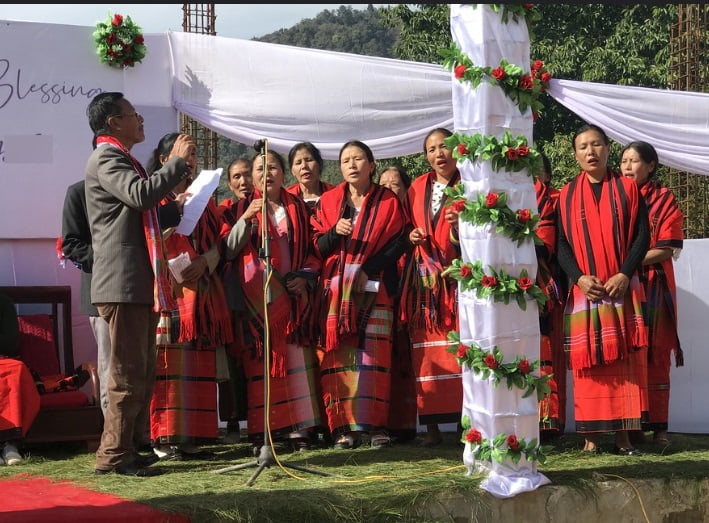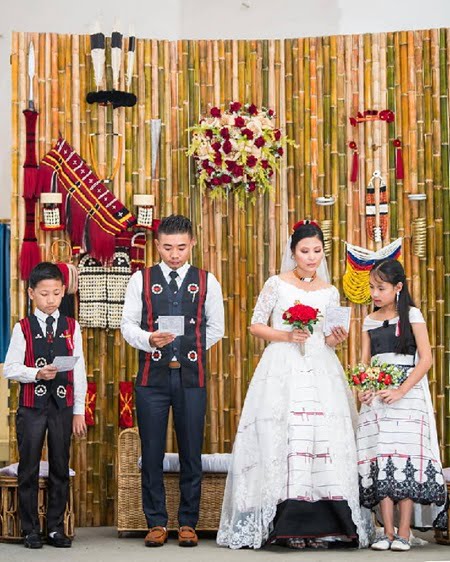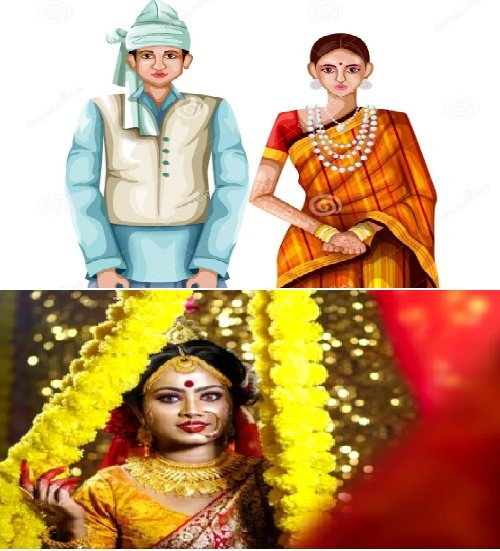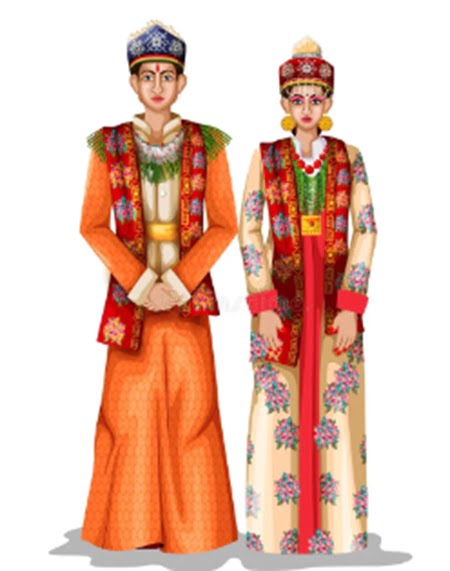India is a country of cultural diversity, and you will notice changes in traditional and cultural elements from state to state. The Northeastern part of India is home to the Indigenous people who have persevered their artistic roots in their rituals with great care, love, and respect.

The mountainous green landscape of the Northeastern part of India isn’t the only thing that can charm you. Their lovely wedding traditions also hold the same power.
Nagamese Wedding Tradition
There are around 16 major tribes in Nagaland, and they have their unique wedding rituals. Though Christianity is the predominant religion of Nagaland, where Christian weddings are predominant, the tribal traditions are relevant in pre-wedding and post-wedding ceremonies. The exogenous marriage tradition of the tribes prohibits marrying in the same clan.

In the Ao tribe, a family in the groom’s village adopts the bride, and they also receive a companion who becomes her bridesmaid. The groom’s family arranges this to make the bride feel secure in the new land. The tribes like Angami, Sema, and Lhota also have some rituals specific to their tribes, which they wholeheartedly follow during their wedding.
Tripura Wedding Tradition
In Tripura, Bengali culture is predominant because most people in Tripura are Bengalis, with indigenous people like the Halam, Mogh, and Tripuri. Though Bengali rituals are frequent during weddings in Tripura, the traditional elements are also evident in some rituals.

Among the indigenous people of Tripura, the custom of Hamjwk Tubui Kaimani is still maintained, which means the couple’s family decides the partner, and the bride and groom don’t have any say. Rinai, Risai, and copper, bronze, and silver jewelry are integral parts of the wedding, carrying the essence of the land.
Meghalaya Wedding Tradition
Meghalaya is the home of Garo, Khasi, and many other tribes who widely follow the matrilineal system where the couple inherits the mother’s surname. Hence, the wedding rituals are at par with this societal structure.

In Meghalaya, the woman proposes to the man, and the man comes to the bride’s house during the wedding, followed by the wedding celebration in the bride’s home as the bride and groom exchange rings and betel nut bags.
Sikkimese Wedding Tradition
Sikkimese population primarily follows Nepali tradition, which is similar to Hindu weddings. The wedding customs like Nandi Shraddha and Baryatra are similar to Bengali weddings. Rituals like the groom asking the bride to look at the sun or the north star or worshiping eight mountains (Sumeru, Shekhu, Udayachal, Marut, Vindyachal, Himalaya, Burait, and Sharad) are beautiful parts of Sikkimese wedding tradition.

Conclusion
Several tribes reside in Northeast India, and their wedding customs are a mixture of their land’s culture and roots, making these customs unique. Many of these rituals date back in the long history of the tribes, and the indigenous people still follow them as a tribute to their tradition. Indian weddings are known for their colorful and vibrant nature, and northeastern states aren’t exceptions because, in India, unity lies in diversity.



